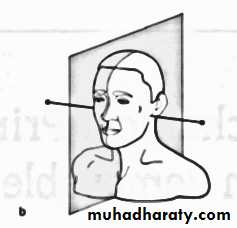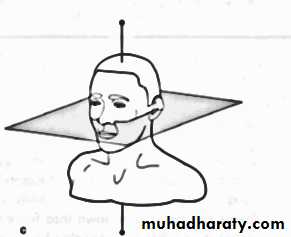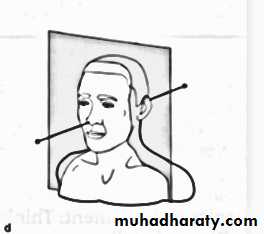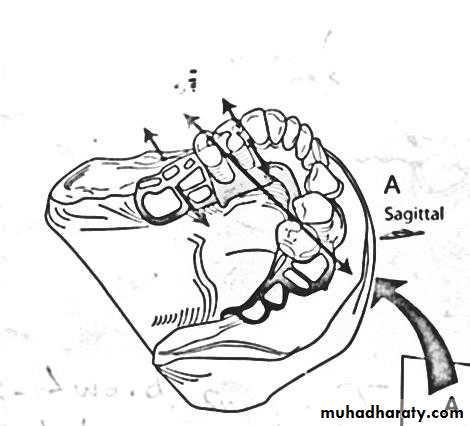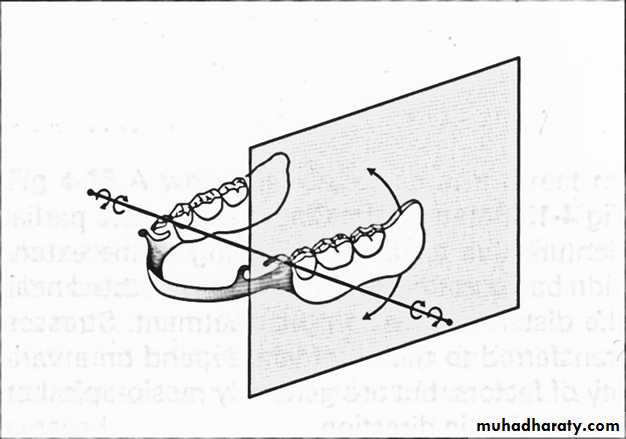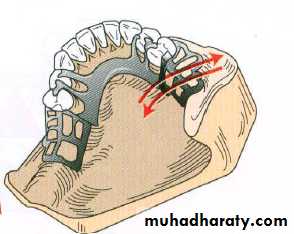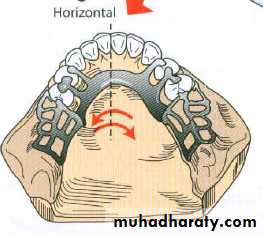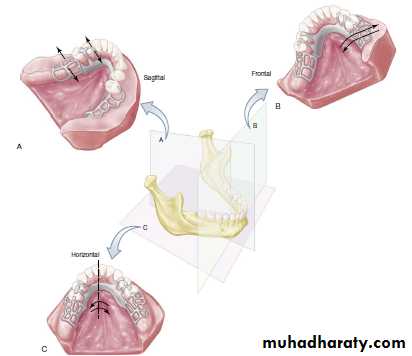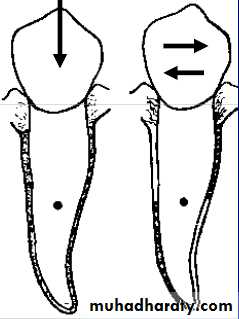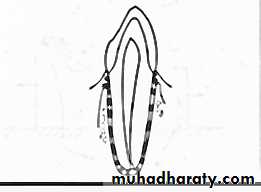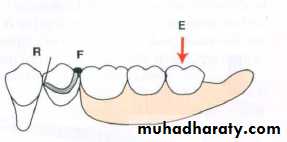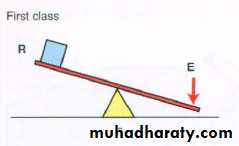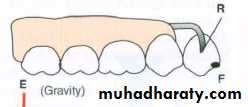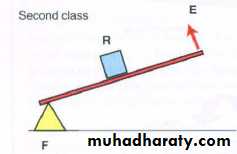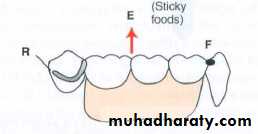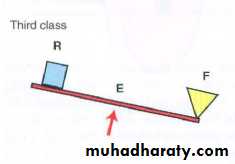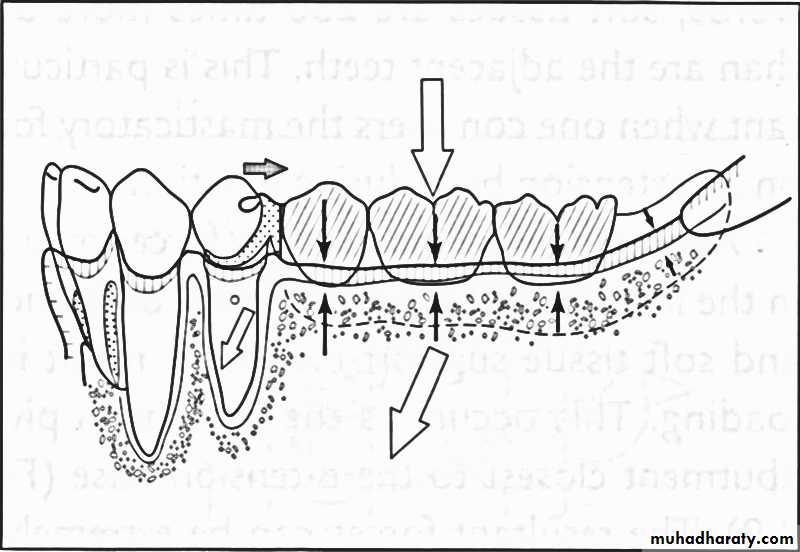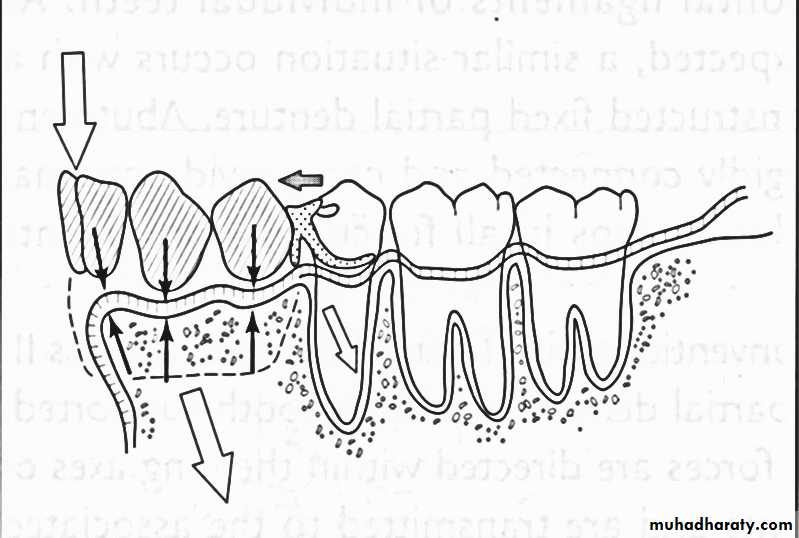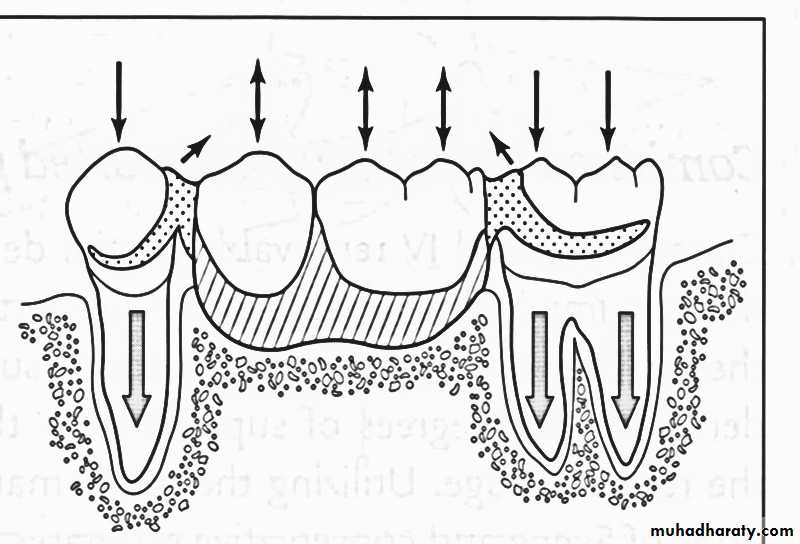Biomechanics of removable partial denture
• Mechanics of Movement• In the human body, movement can occur in any of the three fundamental planes: horizontal, sagittal, or frontal planes.
• These planes are perpendicular and therefore intersect one another at right angles. The intersection of any two planes forms a linear axis .Because there are three planes, there are
• also three axes. These are called the transverse axis, the vertical axis, and the sagittal axis
• Sagittal plane and transverse axis
• Horizontal plane and sagittal axis• Frontal plane and vertical axis
• Possible Movements of Partial Dentures
• Removable partial dentures are subject to a composite of forces arising from three principal fulcrums:• 1.transverse axis (principal fulcrum line axis)
• 2.vertical axis (longitudinal axis)
• 3. sagittal axis
• 1.Rotation of the extension denture base around transverse fulcrum axis
• the fulcrum line( transverse axis)that extends
• through two principal abutments, one on each side of the dental arch, and generally is termed the principal fulcrum line. This fulcrum controls the rotational movement of the denture in the sagittal plane
• (ie, denture movement toward or away from the supporting ridge).
• Rotational movement around this fulcrum line is the greatest in magnitude but is not necessarily the most damaging.
• This axis may pass through occlusal rests or any other rigid portion of a direct retainer located occlusally or incisally to the height of contour of primary abutments.
The vertical tissue ward movment of the denture base is resisted by the tissue of the residual ridge in proportion to :
• The supporting quality of that tissue,
• The accuracy of the fit of the denture base,
• The total amount of occlusal load applied.
While movment of the denture base in the opposite direction(away from the tissue) is resisted by
• action of the retentive clasp arms on terminal abutments and the action of stabilizing minor connectors in conjunction with seated.
• vertical support elements of the framework anterior to the terminal abutments acting as indirect retainers. Indirect retainers should be placed as far as possible from the distal extension base, affording the best possible leverage against lifting of the distal extension base.
• 2-Rotation of all bases around a longitudinal axis parallel to the crest of the residual ridge
• A second movement is rotation about a longitudinal axis as the distal extension base moves in a rotary direction about the residual ridge.
• there would be two fulcrums lines, one on each side of the arch. Those axises controls the rotational movements of the denture in the frontal plane . (ie, a rocking movement over the crest of the ridge).
• This movement is resisted primarily by the rigidity of the major and minor connectors and their ability to resist torque. If the connectors are not rigid, or if a stress-breaker exists between the distal extension base and the major connector, this rotation about a longitudinal axis applies undue stress to the sides of the supporting ridge or causes horizontal shifting of the denture base.
• 3.Horizontal movement (Lateral and antero-posterior)
• The third fulcrum is located in the vicinity of the• midline, just lingual to the anterior teeth .This fulcrum line is oriented vertically and controls rotational movement in the horizontal plane.
• the force resulting from this movement is almost entirely horizontal.Consequently, these forces can be extremely damaging and should receive significant attention during the design process
• Rotation around vertical fulcrum line
• It is resisted by stabilizing components, such as reciprocal clasp arms(bracing arms) and minor connectors that are in contact with vertical tooth surfaces.
• Proximal plates and flanges of the partial denture also resist this movement.
• In the terminology of engineering mechanics, the prosthesis induces stress in the tissue equal to the force applied across the area of contact with the teeth and/or tissue. This same stress acts to produce strain in the supporting tissue, which results in load displacement in the teeth and tissue.
• Biomechanics and Design Solutions
• Bone provides the support for a removable prosthesis (i.e., the alveolar bone by way of the periodontal ligament and the residual ridge through its soft tissue covering).
• If potentially destructive forces can be minimized, then the physiologic tolerances of the supporting structures are not exceeded and pathologic change does not occur.
• Removable partial dentures by design are intended to be placed into and removed from the mouth. Because of this, they cannot be rigidly connected to the teeth or tissue.
• This makes them subject to movement in response to functional loads.
• Biomechanical Considerations
• The supporting structures for removable partial dentures (abutment teeth and residual ridges)• are living things that are subjected to forces.
• the ability of the supporting structures to resist the applied forces depends on the following factors:
• The magnitude and intensity of these forces
• The direction of these forces
• The frequency of these forces
• The duration of these forces
Tissues are adapted( receive and absorb forces) within their physiological tolerance
• Fibers of periodontal ligament are arranged such that their resistance to vertical forces is much greater than that to horizontal forces
•
• A tooth is apparently better able to tolerate vertically directed forces than non-vertical, torquing, or horizontal forces. This characteristic is observed clinically, and it seems rational that more periodontal fibers are activated to resist the application of vertical forces to teeth than are activated to resist the application of non-vertical forces
• The three classes of levers
• A lever consists of a rigid bar, a fulcrum, an object to be moved, and an applied force.• The efficiency of the system is dependent upon the arrangement of the fulcrum, the object, and the force in relation to the bar.
• There are three classes of levers: first, second, and third .
• Lever 1
• Lever 2
• Lever 3
• Class I or II removable partial dentures• Abutment tipping may occur when Class I removable partial dentures receive occlusal loads.
• The distal extension base supported by the underlying soft tissues is displaced more than is the abutment supported by periodontal ligament. The denture base rotates around an axis running through the rest adjacent to the edentulous space. This off-axis abutment loading may result in distal tipping.
• the movement of a distal extension base may create a first-class lever. Movement of the extension base will cause the removable partial denture to rotate about the most distal abutment tooth. This creates a potentially damaging load(lever action) on the teeth and soft tissues anterior to the distal abutment.
• As a rule, the longer the extension base, the greater the potential for damaging loads to be generated on the opposite side of the fulcrum line. This results in a greater need for design features that can minimize rotation.
• Mesial rest concept for distal extension RPD
• RPI SYSTEM
• RPA SYSTEMNote: tissue support of extension base is key factor in reducing lever action of clasp
• Class IV Removable Partial Denture
• Abutment tipping may occur when Class IVremovable partial dentures receive occlusal loads. The anterior extension base supported by the underlying soft tissues is displaced more than is the abutment supported by periodontal ligament. The denture base rotates around an axis running through the rest adjacent to the edentulous space. This off-axis abutment loading may result in mesial tipping.•
• Entirely tooth-supported prostheses
• Class III removable partial denture is entirely tooth supported.• As a result, forces are directed within the long axes of the abutments and are transmitted to the associated periodontal tissues.
• However, limited movement of the prosthesis, including a tendency to lift in function, is possible.

